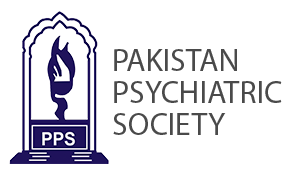Relationship between childhood trauma and obsessive-compulsive disorder
Abstract
OBJECTIVE: The high prevalence rate of obsessive-compulsive disorder in patients with the history of childhood traumas is commonly reported. The current study aimed to investigate the relationship between child sexual, emotional and physical abuse to the onset and course of OCD.
PLACE AND DURATION OF THE STUDY: This study was conducted in Department of Psychiatry and Behavioral Sciences Sheikh Zayed Medical College/Hospital, Rahim Yar Khan, from July 2019 to January 2020.
SUBJECT AND METHODOLGY: In this study cross-sectional research design and purposive sampling technique was used. Data was retrieved from 100 patients diagnosed with obsessive compulsive disorder. Additionally childhood traumas were assessed by Childhood trauma questionnaire (CTQ) developed by David. P, Brenstine.
RESULTS: Results shows that Obsessive Compulsive Disorder was partly significantly correlated with Childhood Trauma and well as subscale. The range of value from (.21** to .44**) and there was no significant difference among gander related to there childhood Truman and other subscale. The mean and SD value are very close for child trauma (Male M = 24.23, SD = 9,71), (Female M = 24.11, SD = 9,82).Analysis suggests a significant relationship between child sexual, emotional and physical abuse in OCD.Furthermore it is suggests for the future study the victims of CSA have contact with mental health services earlier in life, it’s better for the generalization and validation for future study.
Downloads
Copyright © JPPS. Published by Pakistan Psychiatric Society
Licensing: This work is licensed under Creative Commons Attribution-NonCommercial 4.0 International License
Readers may “Share-copy and redistribute the material in any medium or format” and “Adapt-remix, transform, and build upon the material”. The readers must give appropriate credit to the source of the material and indicate if changes were made to the material. Readers may not use the material for commercial purposes. The readers may not apply legal terms or technological measures that legally restrict others from doing anything the license permits.






.png)









